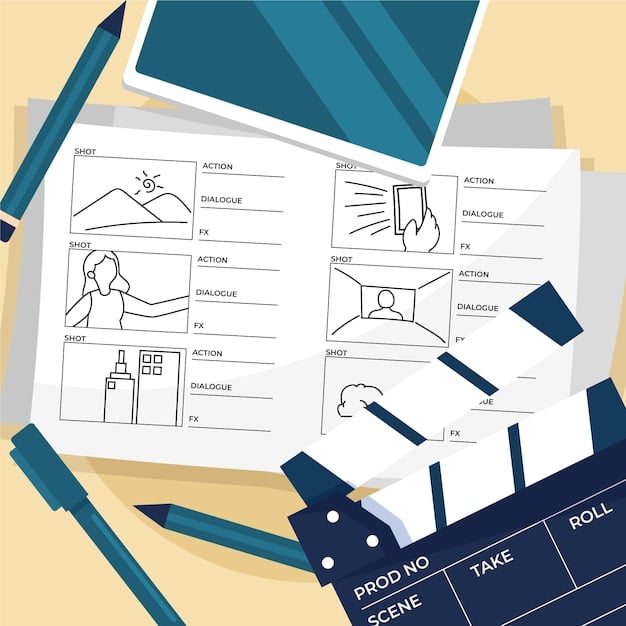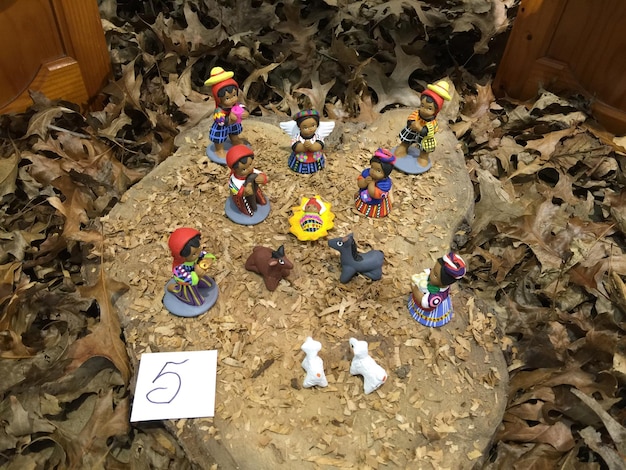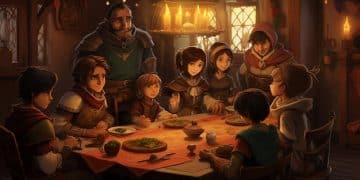US Tabletop RPG Design: Tips for Engaging Campaigns

US Tabletop RPG Design: 4 Tips for Creating Your Own Engaging Campaign provides a comprehensive guide for game masters and players, offering insights into crafting compelling narratives, memorable characters, and immersive gameplay experiences.
Creating a captivating tabletop RPG campaign that resonates with your players requires more than just rolling dice; it demands a blend of creativity, strategy, and understanding of your audience. US Tabletop RPG Design: 4 Tips for Creating Your Own Engaging Campaign will guide you through essential elements to level up your storytelling skills.
Understand Your Players
Before diving into the intricate details of your campaign, it’s crucial to understand who you’re designing it for. Knowing your players’ preferences, play styles, and expectations can significantly impact the success of your game.
Gauge Player Preferences
Start by asking your players what they enjoy in a tabletop RPG. Do they prefer epic quests, intricate political intrigue, or character-driven narratives? Understanding their interests will help you tailor your campaign to their tastes.
Consider their favorite settings, genres, and game mechanics. Do they gravitate towards high-fantasy adventures, gritty cyberpunk scenarios, or historical simulations? Are they more interested in combat-heavy gameplay or exploration and social interaction?
Identify Player Styles
Players have different approaches to the game. Some enjoy min-maxing their characters for optimal combat performance, while others prioritize role-playing and character development. Recognizing these styles allows you to create challenges and rewards that cater to a diverse group.
- The Power Gamer: Focuses on optimizing their character’s abilities and equipment.
- The Role-Player: Emphasizes character backstory, motivations, and interactions.
- The Storyteller: Enjoys contributing to the narrative and shaping the game world.
- The Explorer: Is driven by curiosity and a desire to uncover hidden secrets.
By understanding your players’ preferences and styles, you can create a campaign that caters to their individual interests and ensures everyone has a fulfilling and enjoyable experience. This foundation is essential for building a truly engaging and memorable tabletop RPG campaign.
Understanding your players lays the groundwork for creating a campaign that resonates with their interests and play styles. Tailoring your story to their preferences enhances engagement and investment in the game world.

Craft a Compelling Narrative
At the heart of any great tabletop RPG campaign is a compelling narrative that captivates players and keeps them invested in the game world. A well-crafted story should be engaging, immersive, and filled with memorable moments.
Develop a Strong Premise
Start with a central conflict or mystery that drives the campaign forward. This premise should be intriguing enough to hook players from the beginning and provide a clear sense of direction for their adventures.
Consider using a hook that immediately involves the players in the story, such as a sudden attack, a mysterious disappearance, or a plea for help from a desperate village. This helps create a sense of urgency and motivates them to take action.
Incorporate Intrigue and Mystery
Introduce elements of mystery and intrigue to keep players guessing and speculating. Unresolved questions and hidden agendas can add depth to the narrative and encourage them to investigate further.
- Plant clues and foreshadowing throughout the campaign.
- Introduce NPCs with secrets and hidden motivations.
- Use red herrings to throw players off the scent and create unexpected twists.
A compelling narrative is the backbone of a memorable tabletop RPG campaign. By developing a strong premise, incorporating intrigue and mystery, and weaving in character-driven subplots, you can create a story that resonates with your players and keeps them coming back for more. This narrative foundation is essential for building an engaging and immersive gaming experience.
Crafting a compelling narrative is essential for engaging players and driving the campaign forward. A strong premise with intrigue and mystery creates a sense of investment and encourages players to explore the game world.
Design Memorable Characters
The characters in your campaign, both player characters (PCs) and non-player characters (NPCs), play a vital role in shaping the story and creating meaningful interactions. Memorable characters can add depth, emotion, and conflict to the game world.

Create Believable NPCs
NPCs should feel like real people with their own motivations, flaws, and quirks. Give them distinct personalities and backgrounds that make them more than just quest-givers or information dumps.
Consider giving NPCs specific goals and desires that may align or conflict with the PCs. This can create interesting alliances and rivalries that add complexity to the story.
Develop PC Backstories
Encourage players to create detailed backstories for their PCs. These backstories can tie into the main campaign narrative and provide opportunities for personal growth and development.
Work with players to ensure their backstories are integrated into the game world and have a meaningful impact on their character’s actions and decisions. This can help create a strong sense of investment and ownership in their characters.
Memorable characters are the heart and soul of a captivating tabletop RPG campaign. By creating believable NPCs and developing PC backstories, you can create a world filled with rich personalities and meaningful interactions. This emphasis on character development elevates the gaming experience and fosters a deeper connection between players and the story.
Designing memorable characters, both PCs and NPCs, adds depth and emotion to your campaign. Believable NPCs and detailed PC backstories enhance player engagement and create meaningful interactions.
Implement Engaging Gameplay Mechanics
The gameplay mechanics of your tabletop RPG campaign should be designed to be engaging, challenging, and rewarding. They should complement the narrative and character development, creating a holistic and satisfying gaming experience.
Balance Combat and Exploration
Strive for a balance between combat encounters and opportunities for exploration, puzzle-solving, and social interaction. This variety keeps players engaged and caters to different play styles.
Incorporate Meaningful Choices
Give players meaningful choices that have a real impact on the story and the game world. These choices should have consequences, both positive and negative, that shape the direction of the campaign.
- Present players with moral dilemmas that force them to make difficult decisions.
- Allow players to influence the outcome of events through their actions.
- Reward players for creative problem-solving and strategic thinking.
Engaging gameplay mechanics are the engine that drives a successful tabletop RPG campaign. By balancing combat and exploration and incorporating meaningful choices, you can create a dynamic and rewarding gaming experience that keeps players on the edge of their seats. This emphasis on strategic thinking and player agency ensures that every session is filled with excitement and anticipation.
Implementing engaging gameplay mechanics ensures a dynamic and rewarding experience. Balancing combat with exploration and incorporating meaningful choices keeps players invested in the game.
| Key Point | Brief Description |
|---|---|
| 🤔 Understand Players | Know preferences, play styles for targeted campaign design. |
| ✍️ Compelling Narrative | Craft an engaging story with intrigue, mystery, and a strong premise. |
| 🎭 Memorable Characters | Develop believable NPCs and detailed PC backstories for depth. |
| 🎮 Engaging Gameplay | Balance combat, exploration, and meaningful choices for dynamic play. |
FAQ
▼
Tabletop RPG design involves creating rules, stories, and settings for role-playing games played in person. It focuses on player interaction, imagination, and collaborative storytelling.
▼
Begin by defining the core concept, setting, and target audience. Outline the main storyline and key characters, then start building the rules and gameplay mechanics.
▼
Engaging campaigns feature compelling narratives, memorable characters, player agency, balanced gameplay, and opportunities for creativity and collaboration.
▼
Playtesting is crucial for identifying balance issues, refining rules, and ensuring the campaign is fun and engaging for players. It helps uncover unexpected problems.
▼
Common mistakes include railroading players, inconsistent rules, underdeveloped characters, and a lack of clear goals. Adequate preparation and flexibility are key.
Conclusion
Designing an engaging US Tabletop RPG Design: 4 Tips for Creating Your Own Engaging Campaign requires attention to detail and a deep understanding of your players in mind. By focusing on understanding your players, crafting a compelling narrative, designing memorable characters, and implementing engaging gameplay mechanics, you can create a campaign that will be remembered for years to come.





